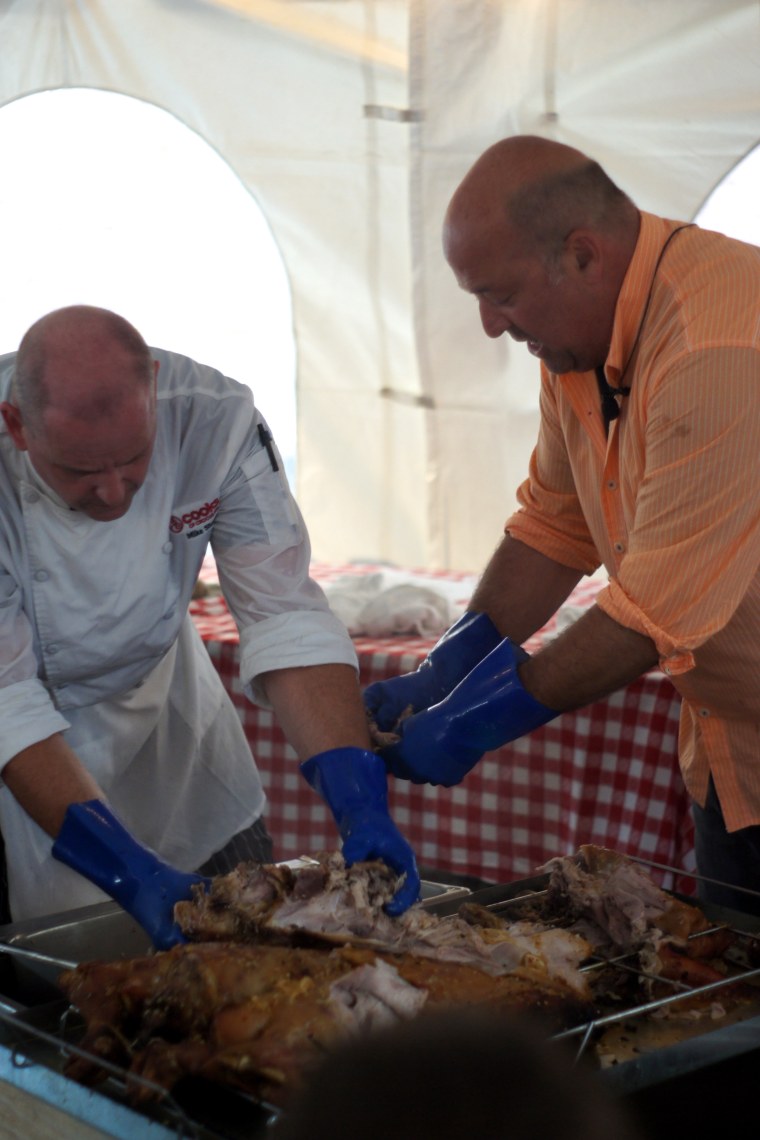It is no surprise that as the nose-to-tail movement continues to expand, whole animal roasts have also risen in popularity. These days, it is not uncommon to see whole pigs being roasted at food festivals, or even entire events paying homage to swine, such as New York’s recent Pig Island.
Restaurants like Boston’s Citizen Public House or La Condesa in Austin even offer a whole roasted suckling pig option on their menus for larger parties. But why pay upwards of $50-$75 per person in a restaurant when you can easily try your hand at whole animal roasting in your own backyard?
While those in more rural areas may go straight to the source and buy animals directly from a local farm, procuring farm-direct meat is easier than ever, between the accessibility of farmer’s markets and the new wave of butcher shops that have popped up. Fleisher’s in New York. Lindy and Grundy in Los Angeles, Salt & Time in Austin, Clancy’s in Minneapolis, and The Swinery in Seattle are just a handful of meat markets with sustainable practices that can provide whole animals for special orders.
“Whole animal roasting has been done since man dragged the first carcass back to his cave,” “Bizarre Foods” host Andrew Zimmern told TODAY.com. “The way that you dealt with an animal that you killed was communal eating. (At my house), we try to do it as often as possible. Throw an animal in the grill, or in the roaster, or in the smoker...It’s easy, it’s inexpensive, and it’s the best way to entertain.”
While animals can be slowly cooked in a stone-lined pit or turned on a rotisserie spit, Zimmern swears by his Caja China, an aluminum roasting box on wheels. The contraption uses charcoal heat to roast a whole or half pig (or lamb, goat, or any other animal). The result is a golden brown skin encasing succulent, juicy meat. “It’s cheaper than a kettle grill, and it’s one of my favorite pieces of equipment,” Zimmern said.

Once on the grill, it’s important to maintain a low temperature (between 225 and 250 degrees). Though cook times vary according to size and type of grill, a 50 pound pig will take roughly 5 hours to reach a safe 160 degrees.
“You take that animal and you roast it indirectly and it just glazes up like nobody’s business,” describes Zimmern. Be sure to check on the meat every so often, basting it with apple juice (or marinade of your choice), and turning it about halfway through.
Read on for more tips from Zimmern and soon you’ll be roasting like a pro!
1. People always think they can’t afford to buy a whole animal, but get a couple people to chip in, and it’s much less expensive than going out to dinner. Plus, you can split up the leftovers!
2. Everybody always thinks of a pig or a lamb or a goat, but why not just do a baby goat or baby pig? Why not do whole rabbits? Heck, a rotisserie duck falls into that category technically. But I think baby pigs and goats work really, really well. They’re almost impossible to miscook, they don’t require a lot of tending, and it’s not a huge commitment.
3. Keep it simple. If you’re looking at recipes and it’s your first time and they want you to do this and inject that and use special wood-- move on. Find something super simple. Simple is better your first couple times out of the gate.
4. Equipment is really important. I love the Caja China and Cowboy Cauldrons, and some of the Weber line of products are big enough to do whole animals, and they work like a charm.
5. I am a firm believer in brining whole animals. There is nothing better. I have a cooler that I just use to brine and I throw a small hog or a lamb or a goat in there and I use a mixture of fruit juice, sugar, salt, some crushed fresh garlic, and big bundles of rosemary that I cut out of the garden, and just bruise and throw in there for 36 hours. It’s very beneficial when you’re roasting whole animals and it’ll save you if you end up cooking a little too hot, which most people do.
6. It’s really a very simple art. Practice makes perfect. Don’t invite 20 people over to your house if you haven’t done it before!
Veronica Meewes is an Austin-based freelance writer who will travel for food but always comes back for breakfast tacos. Follow her on Twitter @wellfedlife and visit herblog.
